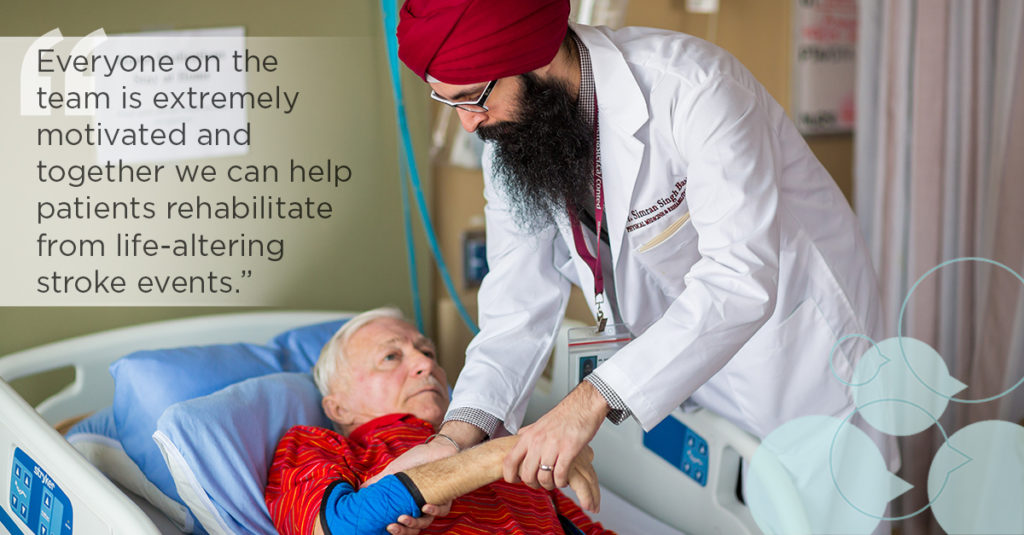
Introducing… a stroke rehabilitation doctor
Dr. Simran Singh Basi is a physical medicine and rehabilitation specialist with a special interest in stroke rehabilitation. He has been with Hamilton Health Sciences (HHS) since 2017 at the Regional Rehabilitation Centre (RRC) at Hamilton General Hospital.
What do you love most about your role?
I love working with a dedicated, motivated and enthusiastic rehabilitation team. Together, we help patients rehabilitate from life-altering stroke events. The physiotherapists, occupational therapists, speech language pathologists, neuropsychologists, pharmacists, social workers, dietitians, respiratory therapists and nursing staff all play a key role in a patient’s rehabilitation. It is a privilege to work with them to achieve optimal patient-centred care and rehabilitation.
What do you find challenging?
One of the most challenging aspects of my role is to prognosticate the eventual functional abilities of a patient. Patients and their loved ones routinely want to know whether they will eventually function like they did before the stroke. Although there are certain factors that can provide a prediction of future functional status, they are imperfect. I often counsel patients and their families to set smaller and more immediate goals that can lead to where they want to go. Through open communication and consistent reflection, we can set realistic goals and build upon their successes.
Describe a typical day
I typically start my day by rounding on my inpatient stroke rehabilitation patients. I then attend one of my outpatient clinics. Following clinic, I check in with the rehabilitation team for updates. Then, I meet with patients and their families to update them on pertinent information. The day usually ends with new admissions to the stroke rehabilitation ward and a final round on my patients before leaving the hospital. I also have weekly rehabilitation team rounds and formal family meetings dispersed throughout the week.
Through open communication and consistent reflection, we can set realistic goals and build upon their successes.
Tell us about your most gratifying experience at HHS
One of my most gratifying experiences involved a patient who suffered a severe stroke event leaving them bedridden and dependent for all their daily activities. The patient’s spouse was incredibly supportive and actively participated in the rehabilitation program to help the patient during therapy sessions. Through everyone’s hard work, this patient made impressive functional gains including improved dressing ability and standing/walking tolerance. The patient and their spouse spoke to me about the rehabilitation journey and how thankful they were to work with the stroke rehabilitation team on the B2 North unit at the RRC. They went from being hopeless to optimistic of a meaningful future when they left the hospital.
What’s one thing people would be surprised to learn about your role?
One thing people would be surprised to learn is the diversity I have in my clinical practice. Although I practice stroke rehabilitation medicine, I also practice musculoskeletal medicine, sports medicine, electrodiagnostic medicine, spasticity management, ultrasound guided injections and more. The physical medicine and rehabilitation specialist’s role can also include other rehabilitation populations such as acquired brain injury, amputee, oncology, orthopedics and spinal cord injury.
